Discover the Wonders of Hadrian's Villa
A guide to one of Rome’s hidden gems
Hadrian's Villa (Villa Adriana) is a large complex of ruins located in Tivoli, Italy, about 30 kilometers east of Rome. It was built by the Roman Emperor Hadrian in the 2nd century AD as his retreat from the city. The villa is a UNESCO World Heritage site and is considered one of the most impressive and well-preserved examples of Roman architecture and engineering. Whether you are a history buff interested in Roman history and architecture, or you are looking for an escape from the crowds in Rome, or you are simply looking for a day trip out of Rome, you should definitely have Hadrian’s Villa on your list.

Overview
Hadrian's Villa was built in the early 2nd century AD by the Roman Emperor Hadrian, who reigned from 117 to 138 AD. Hadrian was a prolific builder and is known for his extensive architectural projects, including the construction of the Pantheon in Rome. Hadrian's Villa was built as a retreat from the city and as a place for the emperor to indulge his interests in art, architecture, and culture. The villa was designed as an ideal city, incorporating architectural traditions of Ancient Greece, Rome, and Egypt.
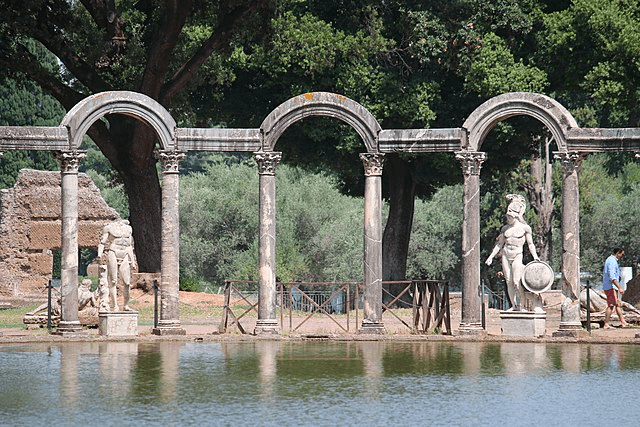
Hadrian’s Villa has over 30 buildings spread out over 250 acres, including palaces, temples, libraries, and theaters. Today, it is only possible to see about 100 acres of the ancient villa. As you explore the villa, you'll also see beautiful gardens, fountains, and sculptures. Hadrian was known for his love of Greek culture, and you'll see many references to Greek mythology throughout the site.
What to see at Hadrian’s Villa
At Hadrian's Villa, visitors can expect to see a vast complex of ruins and archaeological remains, including palaces, temples, libraries, theaters, and other buildings. With over 30 buildings spread out over a large area of about 250 acres, there is a lot to explore. Here are some of the highlights of the site:
Maritime Theatre
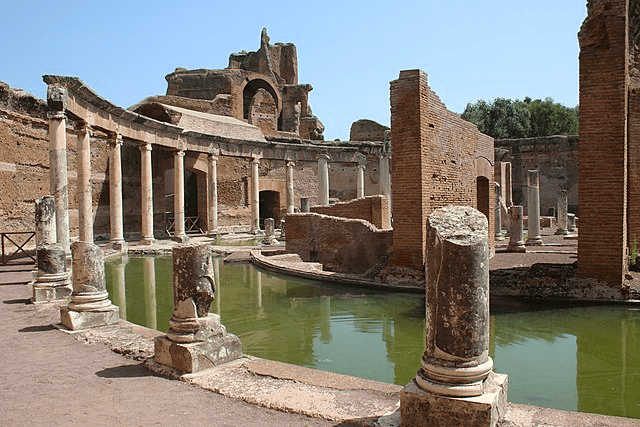
The Maritime Theatre is one of the first few sites that you will see when you enter Hadrian’s Villa. It is a circular island protected by a moat and high walls, and was thought to be a villa-within-a-villa. Without any straight lines, the Maritime Theatre was considered an innovative project that tore away from the traditional Roman standards at that time. While named the ‘Maritime Theatre’, the island was thought to be a residential area where Hadrian retreated when he wanted to have privacy and disconnect from court life.
Canopus and Serapeum
One of the main things you must see at the Hadrian’s Villa is the Canopus, a long pool that was inspired by the famous canal in Alexandria, Egypt. The Egypt-inspired pool is surrounded by Roman-style colonnade with Corinthian columns and Greek statues. From just the Canopus alone, you will be able to see how the elements of Greece, Rome, and Egypt come together, a recurring theme throughout Harian’s Villa.
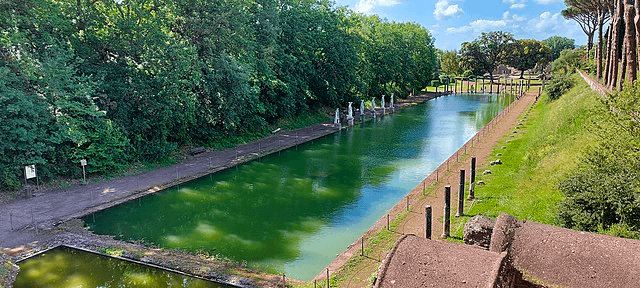
Here at the Canopus, you will also find the Serapeum, a copy of the ancient temple dedicated to the Graeco-Egyptian god Serapis, with a large statue of the deity and other religious artifacts. But the Serapeum was not used as a temple. Instead, Hadrian used it as a dining room for banquets, entertainment, and relaxation.
Piazza d’Oro
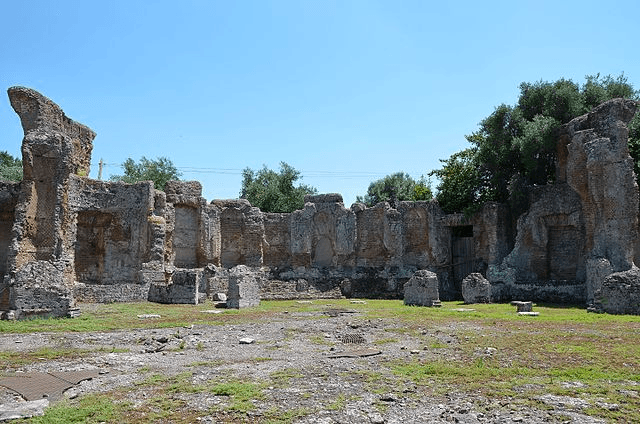
The Piazza d’Oro, or ‘Gold Square’, was one of the most luxurious parts of the palace. But today, it is one of the most decadent parts of the complex, having been extensively looted by excavations and treasure hunters. Thee Piazza d’Oro had a large courtyard that was presumably covered with gardens and fountains, and used for hosting functions like banquets. There is also a room at the Piazza d’Oro that has archaeological similarities to the Stoa of Hadrian in Athens (a library), but it wasn’t clear if this room was used as a library.
Imperial Palace

The Imperial Palace is a series of buildings, including bedrooms, dining halls, and reception rooms that housed the emperor and his entourage. The Imperial Palace was one of the first few buildings that was constructed, and it was built over another Republican-era property that already existed at the site during that time. While most of the palace is in ruins now, you will still be able to see some areas of the original Republican villa.
The Libraries

The libraries are located on the upper terrace surrounded by gardens and a boundary wall, and were considered noble buildings. It isn’t clear when the buildings were constructed and what they were used for, but it is commonly thought that it was used to host banquets and events. The Greek library contained three floors and was connected with the Maritime Theatre by an external stairway; and the Latin library had two floors.
Three Exedras

The Three Exedras building, also called the Arcaded Tirclinium, is another highlight of the Hadrian’s villa. The building has an assortment of rooms, but it is not known what the exact purpose of the rooms was. It is commonly thought to be used for entertainment and hosting of banquets. A large extent of the architectural features remain in place in this building, making it one of the most magnificent structures in the villa today.
Vigilant’s Station
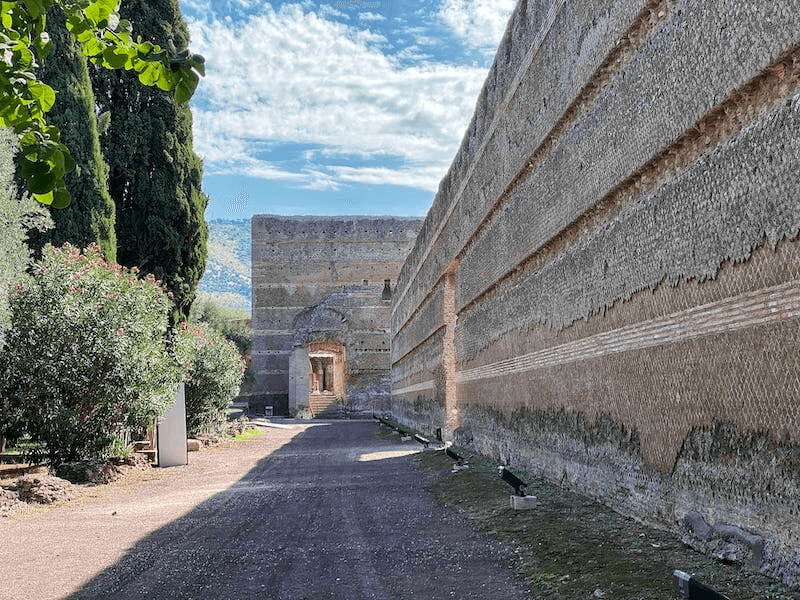
The vigilant’s station was one of the few buildings in the complex that were built for practical functions, and is one of the first few buildings that was constructed. It is often associated with the guards who protected the villa. The plainness and relative simplicity of the vigilant’s station is a stark contrast from the other buildings in the villa. But much of the structure is still standing tall, and just from seeing the size of the station, you probably can imagine how big the entire villa complex was.
Great Baths and Small Baths

The Great Baths and Small Baths are two distinct areas of thermal baths, equipped with pools, saunas, and exercise areas. As the name suggests, the small baths are smaller in size. But they were also of higher luxury, and believed to be used by people of higher nobility. The architecture of the small baths appear to be a collection of various bathhouse features and does not have a central theme to it. The architecture of the baths are fairly well-preserved, so you can spend some time here admiring the different features and architectural designs.
How to Get to Hadrian’s Villa

If you are visiting from Rome: Take the Metro Line B to Ponte Mammolo, and take the Co.tral bus to Hadrian’s Villa. There are a number of Co.tral buses that you can take, but you will have to walk a distance for most of them. For the least walking, take the one heading in the direction of Via Prenestina.
If you are visiting from Tivoli: You can take Line 4 / 4-bis / 4x from Tivoli to Hadrian’s Villa (Villa Adriana)
Entrance Fees and Opening Hours
💰 Cost: €10 for adults and €2 for a reduced ticket
🕤 Opening Hours: From 9am to about 1 hour before sunset
Tips
- Be sure to wear comfortable shoes and bring water, as the site is quite large and can be tiring to explore. It can also get very hot mid-day so be sure to stay hydrated.
- There are many tours that offer packages with nearby attractions. One key area of consideration of these tours would be the amount of time you will get to spend at each site. To help you in making a decision, most people spend about 2 hours for a visit at the Hadrian’s Villa.
- Some nearby attractions that people usually combine their visit to Hadrian’s Villa with the Villa d’Este and Tivoli Gardens. For cost-savings, there are bundled deals available for both Hadrian’s Villa and Villa d’Este.